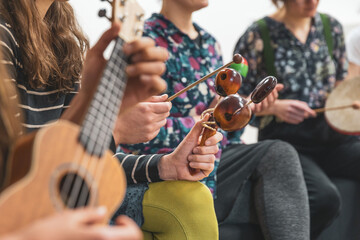Social drinking is a common activity enjoyed by many people. It can be a way to relax, celebrate, or socialize with friends and family. However, it’s important to understand the difference between social drinking and alcohol abuse. This article will explore the key characteristics of each, helping you recognize healthy habits and identify potential problems.
Understanding Social Drinking
Social drinking refers to the consumption of alcohol in a casual and controlled manner. It’s typically done in social settings and doesn’t interfere with daily life or responsibilities. Here are some key characteristics of social drinking:
-
Moderation: Social drinkers typically consume alcohol in moderation. The National Institute on Alcohol Abuse and Alcoholism (NIAAA) defines moderate drinking as one drink per day for women and two drinks per day for men. It’s important to note that these are general guidelines, and individual tolerances may vary.
-
Control: Social drinkers are in control of their alcohol consumption. They can choose to stop drinking when they’ve had enough and avoid getting intoxicated.
-
Enjoyment: Social drinkers enjoy the taste of the beverage and the social interaction that often accompanies it. Alcohol is not used to cope with stress, anxiety, or other negative emotions.
-
Occasional: Social drinking is not an everyday activity. It’s typically done on weekends or special occasions.
Understanding Your Limits
There’s no single answer to how much alcohol is “safe” to drink. Several factors can influence how alcohol affects you, including your weight, gender, metabolism, and medications you’re taking. It’s important to be aware of your own limits and to pace yourself when you do choose to drink. If you find yourself regularly exceeding recommended limits or struggling to control your intake, it might be a sign of a problem.
When Does Social Drinking Become Alcohol Abuse?
The line between social drinking and alcohol abuse can be blurry. However, some signs indicate a potential problem:
-
Binge Drinking: Binge drinking is a pattern of excessive alcohol consumption in a short period. The NIAAA defines binge drinking as consuming four or five drinks (for women) or five or more drinks (for men) within two hours. Binge drinking can lead to intoxication, risky behavior, and negative health consequences.
-
Increased Tolerance: If you find yourself needing more and more alcohol to achieve the same desired effect, it could be a sign of developing dependence.
-
Negative Consequences: Does your drinking lead to problems at work, school, or home? Do you experience frequent hangovers or health issues related to alcohol? These are all red flags.
-
Loss of Control: Are you unable to stop drinking once you start? Do you find yourself making risky decisions or engaging in behavior you wouldn’t normally do when intoxicated? These can be signs of a problem.
-
Preoccupation with Alcohol: Does most of your thinking or planning revolve around obtaining or consuming alcohol? This is a major indicator of dependence.
Seeking Help for Alcohol Abuse
If you’re concerned about your drinking or the drinking of someone you care about, there are many resources available to help. Here are some steps you can take:
- Talk to Your Doctor: Your doctor can assess your alcohol use and develop a treatment plan if necessary. They can also help address any underlying health conditions that might be contributing to your drinking.
- Consider Professional Treatment: Relief Recovery Center offers various treatment programs tailored to individual needs. These programs may include detoxification, therapy, medication-assisted treatment, and support groups.
- Join a Support Group: Support groups like Alcoholics Anonymous (AA) or SMART Recovery provide a safe space to connect with others who are struggling with alcohol abuse. Sharing experiences and receiving encouragement can be a valuable part of the recovery process.
- Seek Help from a Therapist: Therapy can help you understand the underlying reasons for your drinking and develop coping mechanisms to deal with stress and triggers.
- Reach Out to a Hotline: You can call the SAMHSA National Helpline at 1-800-662-HELP (4357) for confidential information and support 24/7.
- Involve Loved Ones: Let your family and friends know you’re struggling with alcohol abuse. Their support and understanding can be crucial in your recovery journey.
Remember, seeking help is a sign of strength, not weakness. You don’t have to go through this alone. There are people who care about you and want to see you succeed.
Tips for Safe Social Drinking
- Pace Yourself: Alternate alcoholic drinks with non-alcoholic beverages like water or soda. This helps you stay hydrated and slow down your alcohol consumption.
- Eat Food: Eating food before or while drinking slows down the absorption of alcohol into your bloodstream.
- Plan Ahead: Decide how much you’re going to drink beforehand and stick to that limit.
- Choose Lower-Alcohol Drinks: Opt for drinks with lower alcohol content like light beers or wines.
- Be Aware of Your Surroundings: Let someone you trust know where you’re going and when you expect to be back.
- Avoid Drinking Games: Drinking games can encourage excessive alcohol consumption.
Living a Balanced Life
If you enjoy social drinking and can do so in moderation, there’s no reason to stop altogether. However, it’s crucial to be aware of the potential risks and to recognize the signs of alcohol abuse. If you’re struggling with your drinking, Relief Recovery Center can help. Get in touch today to learn more about our treatment programs and take the first step towards a healthier life.
Additional Resources
For further information on social drinking and alcohol abuse, you can also visit the following resources:



